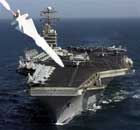Asia-Pacific
Burning oil rig sinks, setting stage for big spill
(Agencies)
Updated: 2010-04-23 10:15
 |
Large Medium Small |
The family of Dewey Revette, 48, said he was also among the missing. He worked as a driller on the rig and had been with the company for 29 years.
"We're all just sitting around waiting for the phone to ring and hoping for good news. And praying about it," said Revette's 23-year-old daughter, Andrea Cochran.
Adrian Rose, vice president of rig owner Transocean Ltd., said Thursday some surviving workers said in company interviews that their missing colleagues may not have been able to evacuate in time. He said he was unable to confirm whether that was the case.
Those who escaped did so mainly by getting on lifeboats that were lowered into the gulf, Rose said. Weekly emergency drills seemed to help, he said, adding that workers apparently stuck together as they fled the devastating blast.
"There are a number of uncorroborated stories, a lot of them really quite heroic stories of how people looked after each other. There was very little panic," Rose said.
Coast Guard Petty Officer Kevin Fernandez was the flight mechanic on a helicopter that was the first to respond, about 15 minutes after the explosion. Fernandez said he could see the fire from 80 miles away, with flames rising about 500 feet (152 meters).
"I was kind of expecting worse" in terms of fatalities, he said. But all the survivors already had made their way from the lifeboats into a supply boat. Fernandez and his crew plucked two critically injured survivors to a nearby rig that had a paramedic on board.
Family members of two missing workers filed separate lawsuits Thursday accusing Transocean and BP of negligence. Both companies declined to comment about legal action against them after the first suit was filed.
The US Minerals Management Service, which regulates oil rigs, conducted three routine inspections of the Deepwater Horizon this year - in February, March and on April 1 - and found no violations, MMS spokeswoman Eileen Angelico said.
The rig was doing exploratory drilling about 50 miles (80 kilometers) off the coast of Louisiana when the explosion and fire occurred, sending a column of boiling black smoke hundreds of feet over the gulf.
Rose has said the explosion appeared to be a blowout, in which natural gas or oil forces its way up a well pipe and smashes the equipment. Precisely what went wrong is under investigation.
Transocean Ltd. spokesman Guy Cantwell said 111 workers who made it off the Deepwater Horizon safely after the blast were ashore Thursday, and four others were still on a boat that operates an underwater robot. A robot will eventually be used to stop the flow of oil to the rig. He said officials have not decided when that will happen.
Seventeen workers brought to shore Wednesday suffered burns, broken legs and smoke inhalation. Four were critically injured.
Rose said the crew had drilled the well to its final depth, more than 18,000 feet (5,485 meters), and was cementing the steel casing at the time of the explosion. They had little time to evacuate, he said.
The explosion is not expected to have a major impact on the oil industry. There are 90 rigs in the offshore Gulf of Mexico either drilling wells or performing work on existing wells, according to the MMS.
"It's a personal tragedy," Arthur Weglein, director of the Mission Oriented Seismic Research program at the University of Houston. "Besides that, it's just one rig less in the deep water."
The explosion came less than a month after President Barack Obama's decision to open portions of the East Coast to oil and gas exploration, and opponents of the move have seized on the blast as a reason to reverse course.
"The bottom line is that when you drill for oil, there is always a risk that not only puts lives on the line, but a risk that puts miles of coastline and the economy on the line as well," Sens. Robert Menendez and Frank Lautenberg said in a statement.
Working on offshore oil rigs is a dangerous job but has become safer in recent years thanks to improved training, safety systems and maintenance, said Joe Hurt, regional vice president for the International Association of Drilling Contractors.
Since 2001, there have been 69 offshore deaths, 1,349 injuries and 858 fires and explosions in the gulf, according to the Minerals Management Service. Coast Guard Senior Chief Petty Officer Mike O'Berry said accidents are rare given that 30,000 people work on rigs there every day.
"They're highly trained. They know the dangers," O'Berry said. "The safety precautions they take are extreme. A testament to that is of the 126, 115 are home today with their families."






